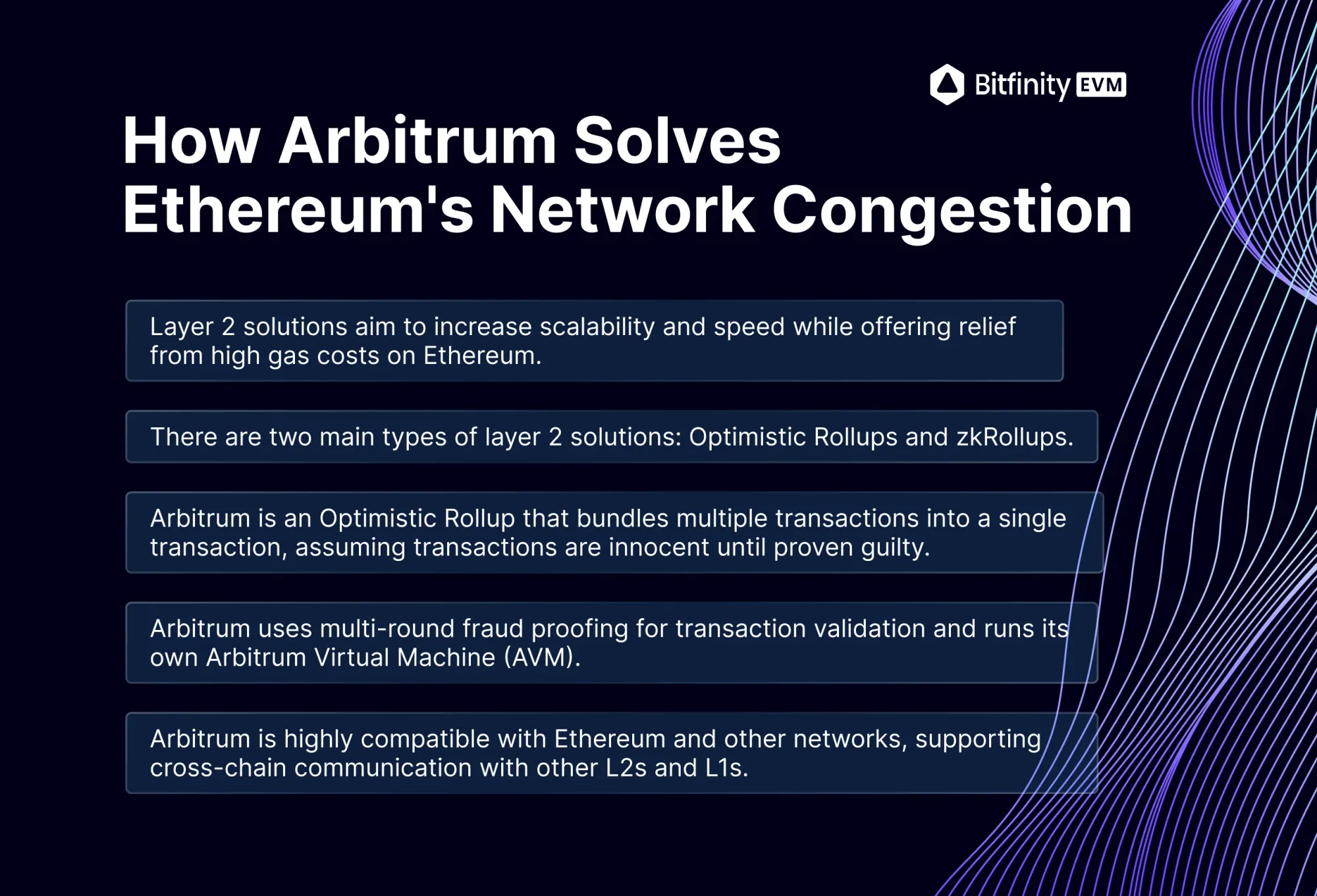Arbitrum: The Ethereum L2 Solution Taking the Crypto World by Storm
Discover how Arbitrum, the optimistic rollup layer 2 solution, addresses network congestion on the Ethereum network, and how it differs from other layer 2 solutions...

Arbitrum, the Ethereum L2 solution that is taking the crypto world by storm is addressing the network congestion on the Ethereum network. But how does it differ from other layer 2 solutions and what makes it so unique?
Quick Recap on Layer 2 Solutions
Layer 2 solutions such as Arbitrum aim to bring increased scalability and speed to the Ethereum network and offer relief from heavy financial burdens coming from high gas costs.
Technically, depending on whether ‘validity proofs’ or ‘fraud proofs’ are used and the mechanism for data availability, we recognize two main layer 2 solutions;
- Optimistic Rollups - Fraud Proofs with data on L1 Ethereum
- zkRollups - Validity Proofs with data on L1 Ethereum
What is Arbitrum and what layer 2 solution does it offer?

Arbitrum belongs to the optimistic rollup category, as it uses a ‘rollup’ technology to bundle multiple transactions into a single transaction and assumes transactions are innocent until proven guilty and is therefore ‘optimistic’.
Arbitrum vs. Optimism
While Arbitrum and Optimism are both classified as ‘optimistic rollups’, they utilize different dispute-resolution processes to validate transactions. Arbitrum uses a multi-round fraud proofing that is more advanced than that of Optimism. Also, Arbitrum runs its own Arbitrum Virtual Machine (AVM), and supports all EVM compiled languages (Vyper, Yul, etc) in comparison to Optimism which uses Ethereum's EVM only. Therefore Arbitrum is highly compatible with Ethereum and other networks and is designed to support cross-chain communication with other L2s and L1s.
What about ZK Rollups?
Unlike optimistic rollups, which rely on validators to submit transactions to the main chain, zk-rollups use zero-knowledge (zk) proofs to validate transactions off-chain. This helps improve the speed, privacy, and efficiency of the blockchain while maintaining the same level of security as Ethereum.
Arbitrum vs. ZkSync
ZkSync uses zk-proofs that offer stronger privacy guarantees, while the main advantage of optimistic rollups is that they are more flexible and easier to develop. They have similar performance in terms of transaction throughput and can process thousands of transactions per second (Tps). However, ZkSync is currently limited to ERC-20 token transfers, while Arbitrum supports more complex dApps that require smart contract execution.
Arbitrum vs. Polygon
At last, we take a look at Polygon, which is a Layer 2 scaling solution that runs parallel to Ethereum and NOT on Ethereum. It’s important to mention that Polygon is a sidechain that is secured by its own MATIC token and relies on its own Proof of Stake algorithm, which is a smaller pool if we compare it to the miners who secure Ethereum.
Comparison Table
Conclusion
Arbitrum's reputation as one of the biggest scaling solutions is playing a critical role in its usage. With several Layer 2 solutions available, you have a choice of different options based on your specific needs. Will the launch of new layer 2 solutions such as zkEVM detract attention away from Arbitrum? Either way, we’ll be happy to see more developments in the Ethereum space altogether.

Connect with Bitfinity Network
Bitfinity Wallet |Bitfinity Network | Twitter | Website | Telegram | Discord | Github

*Disclaimer: While every effort is made on this website to provide accurate information, any opinions expressed or information disseminated do not necessarily reflect the views of Bitfinity itself.





Comments ()